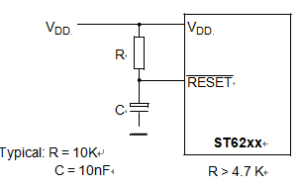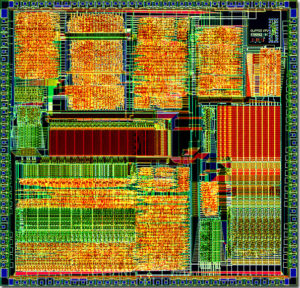MCU ST62T42 Eeprom Heximal Copying
If the RESET pin is grounded while the MCU is in RUN or WAIT modes, processing of the user program is stopped (RUN mode only), the I/O ports are configured as inputs with pull-up resistors and the main oscillator is restarted to get the MCU ST62T42 Eeprom Heximal Copying ready.
When the level on the RESET pin then goes high, the initialization sequence is executed at the end of the internal delay period. If the RESET pin is grounded while the MCU is in STOP mode, the oscillator starts up and all the I/O ports are configured as inputs with pull-up resistors. When the RESET pin level then goes high, the initialization sequence is executed at the end of the internal delay period to facilitate the process of Break Chip ST62T25 Eeprom Heximal.
A simple external RESET circuitry is shown in below Figure. For more details, please refer to the application note AN669.
The MCU provides a Watchdog timer function in order to be able to recover from software hang-ups. If the Watchdog register is not refreshed before an end-of-count condition is reached, a Watchdog reset is generated.
After a Watchdog reset, the MCU restarts in the same way as if a Reset was generated by the RESET pin.
Note: When a watchdog reset occurs, the RESET pin is tied low for very short time period, to flag the reset phase. This time is not long enough to reset external circuits in order to ease the process of Microcontroller ST62T32 Code Extraction.
Two different RESET sequences caused by the internal LVD circuitry can be distinguished:
Power-On RESET, Voltage Drop RESET, During an LVD reset, the RESET pin is pulled low when VDD<VIT+ (rising edge) or VDD<VIT- (falling edge).
Caution: Do not externally connect directly the RESET pin to VDD, this may cause damage to the component in case of internal RESET (Watchdog or LVD).



